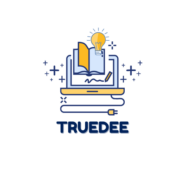When it comes to K-12 education, choosing the right state can make a world of difference for students and their families. With varying standards, resources, and opportunities, some states shine brighter than others in fostering academic success. I’ve explored the landscape of education across the country to uncover which state stands out as the best for K-12 learning. From innovative teaching methods to robust funding and support systems, certain states are leading the charge in providing exceptional educational experiences. Whether you’re a parent considering a move or an educator seeking inspiration, understanding what makes a state the best for K-12 education can help you make informed decisions. Let’s dive into the factors that contribute to educational excellence and reveal which state tops the list.
- State Comparisons: States like Massachusetts and New Jersey excel in K-12 education due to high funding, strong academic performance, and innovative teaching strategies.
- Funding Significance: Educational funding plays a crucial role, impacting resources like teacher salaries, classroom sizes, and quality of facilities across states.
- Teacher Quality Matters: Retaining qualified teachers through competitive salaries and professional development is essential for enhancing student outcomes.
- Extracurricular Opportunities: States with strong funding for extracurricular activities often see higher student engagement and better academic results.
- Emerging Trends: The future of K-12 education includes a focus on personalized learning, educational equity, and integrating technology into classrooms.
- Challenges to Address: Ongoing issues such as funding disparities, teacher shortages, and infrastructure problems need to be tackled to improve educational quality across states.
Discover the Best State for Education K-12
K-12 education in the U.S. encompasses kindergarten through 12th grade and is crucial for shaping students’ academic trajectory. Education systems vary significantly across states due to differences in funding, curriculum standards, and educational reform initiatives. States allocate varying budgets, impacting teacher salaries, classroom sizes, and resource availability. In 2020, the average expenditure per student in public elementary and secondary schools reached approximately $13,600, with discrepancies between states.
Curriculum frameworks also differ. Many states adopt Common Core State Standards or other benchmark guidelines for English language arts and mathematics. Additionally, states implement various assessments for student performance, including standardized testing and performance-based evaluations. For example, states like Massachusetts and New Jersey consistently score high on national assessments, reflecting their robust educational models.
Extracurricular opportunities play a critical role. Schools in some states offer extensive programs in arts, sports, and technology, enriching student experiences. For instance, states with strong funding for extracurricular activities typically report higher student engagement and improved academic outcomes.
Innovative teaching methods drive success in K-12 education. Several states prioritize project-based learning, early intervention strategies, and personalized education plans. These approaches cater to diverse learning styles and foster critical thinking and problem-solving skills among students. A state like California emphasizes STEM (science, technology, engineering, and mathematics) education, preparing students for the workforce.
The landscape of K-12 education in the U.S. reflects a complex interplay of funding, curriculum, assessment, extracurricular activities, and innovative teaching strategies. States that excel in these areas create conducive environments for academic success, significantly affecting students’ lifelong learning opportunities.
Criteria for Evaluating Education Quality

Evaluating education quality involves examining several key criteria that define a state’s K-12 education system. These criteria include academic performance metrics and teacher quality and retention.
Academic Performance Metrics
Academic performance metrics play a vital role in assessing education quality. States often utilize standardized tests to gauge student achievement across different grade levels. Metrics include proficiency rates in critical subjects like mathematics, reading, and science.
- Standardized Test Scores: Test results provide a clear picture of how students perform compared to national averages. For instance, states like Massachusetts and New Jersey consistently rank at the top in standardized tests.
- Graduation Rates: High graduation rates indicate effective educational practices and student support systems. For example, states with graduation rates above 90% demonstrate strong academic support.
- College and Career Readiness: Metrics such as ACT and SAT scores reflect students’ preparedness for post-secondary education. States that prioritize college readiness often see higher enrollment in advanced placement courses.
Teacher Quality and Retention
Teacher quality and retention directly impact the effectiveness of K-12 education. States that invest in attracting and keeping qualified educators often yield better student outcomes.
- Professional Development Opportunities: Access to ongoing training and support enhances teachers’ skills. States that provide comprehensive professional development systems see improved teaching practices.
- Salary Competitiveness: Competitive salaries help retain effective teachers. States with higher average salaries for teachers often report lower turnover rates and more experienced faculty.
- Supportive Work Environments: A positive school culture promotes teacher satisfaction. States emphasizing collaboration and resources report higher retention rates among educators.
These criteria establish a framework for evaluating education quality across states, ultimately guiding family decisions about K-12 education.
Top States for K-12 Education

Several states excel in K-12 education, showcasing remarkable standards, resources, and educational innovations. Here’s a closer look at some of the top contenders.
State 1: Overview and Key Features
Massachusetts consistently ranks at the top for K-12 education quality. It invests heavily in educational funding, with an average expenditure of about $16,000 per student. The state’s commitment to academic excellence reflects in high standardized test scores and graduation rates exceeding 90%. Massachusetts implements rigorous curriculum standards and embraces innovative teaching methods, such as project-based learning, enhancing student engagement. Strong professional development and competitive teacher salaries contribute to teacher retention and overall educational success.
State 2: Overview and Key Features
New Jersey follows closely, celebrated for its robust K-12 educational framework. The state spends approximately $16,500 per student, ensuring adequate resources for classrooms and extracurricular activities. New Jersey’s students excel in college readiness, frequently scoring above the national average in assessments. The diverse curriculum incorporates various educational strategies, promoting inclusivity and equity. Ongoing investment in teacher training and development fosters a highly skilled workforce, leading to improved student outcomes across the board.
State 3: Overview and Key Features
Florida has emerged as a leader in educational reform, particularly concerning school choice and alternative education pathways. The state allocates around $13,200 per student, providing ample resources for students and schools. Florida’s rigorous academic standards and emphasis on technology integration prepare students for future success. The state’s focus on personalized learning plans and innovative teaching techniques enhances student engagement. Additionally, various extracurricular opportunities promote well-rounded education, supporting holistic development in students.
Challenges Faced by Each State

Each state encounters unique challenges affecting K-12 education quality. Understanding these hurdles provides insight into why certain states excel or struggle.
Funding Disparities
Funding disparities significantly impact education. States like California face challenges with unequal distribution of resources, leading to variations in school funding. Urban districts often receive less than their suburban counterparts, creating deficiencies in supplies and support services.
Teacher Shortages
Teacher shortages pose another significant issue. States such as Texas and Arizona experience high turnover rates, leading to classrooms without qualified instructors. These shortages directly affect educational continuity and student performance.
Curriculum Standardization
Curriculum standardization creates obstacles in states that struggle with implementing cohesive educational guidelines. States like Mississippi face difficulties in aligning educational standards, resulting in uneven educational experiences across districts.
Infrastructure Issues
Infrastructure issues impede educational progress in various states. In states like West Virginia, aging schools often lack adequate facilities, impacting student learning environments. Poor infrastructure can deter families from choosing public education options.
Socioeconomic Challenges
Socioeconomic challenges also influence educational outcomes. States like Louisiana deal with high poverty rates, which correlate with lower student achievement. Limited access to resources and support services affects students’ ability to thrive academically.
Political Influences
Political influences can disrupt education reform efforts. In states with unstable legislative environments, such as Michigan, persistent policy changes complicate the implementation of effective educational initiatives. Constant shifts hinder long-term planning for schools and teachers.
Enrollment Growth
Rapid enrollment growth creates strains on existing educational resources. States like Nevada face significant increases in student populations without proportionate funding or infrastructure improvements. This imbalance strains teachers and facilities, potentially diminishing educational quality.
Accountability Measures
Strict accountability measures can be a double-edged sword. States implementing high-stakes testing, like Georgia, may inadvertently focus on test preparation over holistic education. This focus can narrow the curriculum and limit creative teaching methods.
Addressing these challenges is essential for improving K-12 education quality across all states. Each state’s unique context demands tailored solutions to create equitable and effective educational environments for all students.
Future Trends in K-12 Education
K-12 education is evolving rapidly, driven by technology, policy changes, and shifting educational philosophies. Schools are integrating technology into classrooms, enhancing learning experiences and facilitating personalized education plans. Blended learning models, which combine online and face-to-face instruction, offer flexibility and accommodate diverse learning styles.
Educational equity is gaining attention, as policymakers are prioritizing inclusivity in funding and resource allocation. States are implementing initiatives aimed at closing the achievement gap and ensuring all students have access to high-quality education. For instance, programs designed to support low-income and marginalized communities are increasing in various regions.
Competency-based education is emerging, focusing on measuring student mastery of subjects rather than traditional time-based assessments. This approach enables students to progress at their own pace, fostering a deeper understanding of core concepts. Schools that adopt this model often report improved student motivation and engagement.
Social-emotional learning is becoming a fundamental aspect of K-12 education. States are recognizing the importance of mental health and emotional intelligence, integrating these components into curricula and teacher training. This trend aims to cultivate well-rounded individuals prepared for the complexities of modern society.
Parental involvement in education is increasing as technology allows schools to engage families more effectively. Communication platforms and educational apps provide parents with real-time updates on their children’s progress, fostering a collaborative approach to learning.
Moreover, environmental sustainability is influencing educational practices. Schools are focusing on green initiatives, teaching students about sustainability through hands-on projects and environmental science curricula. These efforts prepare students for future challenges related to climate change and resource management.
Additionally, the emphasis on lifelong learning is growing, with states incorporating skills training and career readiness programs into K-12 education. Partnerships with local businesses and industries provide students with real-world experiences, equipping them with skills for the workforce.
Implementation of innovative assessments is also changing how student performance is evaluated. States are exploring alternative assessments that reflect a broader range of student abilities and competencies, moving beyond standardized testing.
These trends are reshaping K-12 education, reflecting a commitment to providing high-quality, relevant educational experiences for all students.
Finding the best state for K-12 education can truly transform a child’s academic journey. As I explored various states and their unique offerings, it became clear that factors like funding, innovative teaching methods, and supportive environments play a crucial role in shaping educational success.
States like Massachusetts and New Jersey stand out for their commitment to excellence while Florida’s reforms offer exciting opportunities for student engagement.
By understanding these differences and challenges, families can make informed choices that align with their children’s needs and aspirations. Investing in quality education is an investment in a brighter future for our kids.

